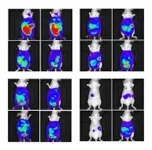Is raising the sales age of tobacco reducing youth smoking?
UC Davis researchers look at smoking behavior three years after California's tobacco 21 law took effect
2021-04-23
(Press-News.org) Smoking is the leading cause of preventable death in America and causes about 30% of all cancer deaths. That's why researchers with the UC Davis Comprehensive Cancer Center wanted to study the impact of a California law passed in 2016 that raised the tobacco sales age from 18 to 21. Their new study published in Preventive Medicine examines smoking behavior after the state implemented one of the first tobacco 21 (T21) policies.
The study, conducted by UC Davis researchers Melanie Dove, Susan Stewart and Elisa Tong, looked at smoking patterns before and after the law passed and compared California and other states without a T21 policy. The data was from the 2012-2019 Behavioral Risk Factor Surveillance System.
"Most adult tobacco users start smoking cigarettes before the age of 18, when the brain is still developing and is especially susceptible to nicotine and addiction," said Dove, assistant professor of UC Davis Department of Public Health Sciences, Division of Health Policy and Management and lead author of the paper. "The new T21 law has the potential, over time, of dramatically reducing the number of youth who begin smoking regularly and that's why it is important to track the impact."
The study showed that the new T21 law was associated with a greater decrease in smoking, at least when it came to daily smoking, in 18-20-year-olds compared to 21-23-year-olds in California.
"The great news is that the prevalence of 'daily' smoking among 18-20-year-olds went from 2.2% in 2016 to nearly zero in 2019," said Stewart, professor with UC Davis Department of Public Health Sciences, Division of Biostatistics. "A possible reason that we may have seen a decrease in 'daily' smoking, but not 'non-daily' smoking, is that 'daily' smokers are more likely to buy their own cigarettes--so they are more likely to be impacted by sales restrictions."
There was no decrease found in 'non-daily' smoking and that's likely because these users don't smoke regularly and often get cigarettes from a friend or family member. Additionally, there was no associated decrease in 'ever' or 'current' smoking patterns with California's T21 law, at least three years post-implementation.
While it may be surprising that the new T21 law didn't reduce cigarette smoking across all types of smoking behavior, explanations include pre-existing declines in smoking nationwide, enforcement challenges at the state level, increased use of other products (e-cigarettes and marijuana), definitions of smokers in the study, sales outside of retail stores and other tobacco control policies.
"Future studies should examine the role of e-cigarette use, policy enforcement as well as online sales," said Tong, an internist and associate professor who directs tobacco cessation initiatives at the UC Davis Comprehensive Cancer Center. "These are important public health issues that deserve examination and, potentially, new policy solutions in order to protect our youth in California from the deadly diseases that often result from addiction to tobacco products."
INFORMATION:
The study was supported by: 1) grant number T32HP30037 from the Health Resources and Services Administration through the Quality, Safety, and Comparative Effectiveness Research Training - Primary Care (QSCERT-PC) Program, and 2) the National Center for Advancing Translational Sciences, National Institutes of Health, through grant number UL1 TR001860 and linked award KL2 TR001859, and 3) National Cancer Institute P30CA093373.
ELSE PRESS RELEASES FROM THIS DATE:
2021-04-23
Batteries are a part of everyday modern life, powering everything from laptops, phones and robot vacuums to hearing aids, pacemakers and even electric cars. But these batteries potentially pose safety and environmental risks.
In a study recently published in Cell Reports Physical Science, researchers at Texas A&M University investigated the components of a different kind of battery -- a metal-free, water-based battery -- which would reduce the flammable nature of standard batteries and decrease the number of metal elements used in their production.
Most batteries are ...
2021-04-23
Researchers led by Katsunori Tanaka and Kenward Vong at the RIKEN Cluster for Pioneering Research (CPR) in Japan have demonstrated that tumor growth can be reduced by therapy that tags cancer cells with different therapeutic molecules. In one case, the group was able to prevent tumors from forming in mice by targeting cancer cells with a compound that makes it difficult for the cells to clump together and form tumors. For tumors that already existed, they targeted cancer cells with toxic compounds that destroyed them. This study was published on April 23 in Science Advances.
One of the major problems with current cancer treatments is that their effects are not limited to cancerous cells in ...
2021-04-23
An international team of researchers led by the University of Bergen has uncovered how organisms from crops to corals may avoid deadly DNA damage during evolution.
Our cells, and those of animals, plants and fungi, contain compartments that produce chemical fuel. These compartments contain their own DNA, which stores instructions for important cellular machinery. But this so-called oDNA (organelle DNA) can become mutated, corrupting the instructions and preventing cells making enough energy.
In humans and some other animals, a process called the "bottleneck" allows some offspring to inherit less mutated oDNA. This process needs mothers' egg cells to develop early, like in humans, where a human girl is born with all ...
2021-04-23
DURHAM, N.C. - Fruits and veggies are good for you and if you are a lemur, they may even help mitigate the effects of habitat loss.
A new study sequencing the genome of four species of sifakas, a genus of lemurs found only in Madagascar's forests, reveals that these animals' taste for leaves runs all the way to their genes, which are also more diverse than expected for an endangered species.
Sifakas are folivores, meaning that the bulk of their diet is composed of leaves. Leaves can be difficult to digest and full of toxic compounds meant to prevent them from being eaten. Unlike our carefully selected spinach, tree leaves also don't taste great, and are not very nutritious.
Because of that, leaf-eaters ...
2021-04-23
Strenuous efforts to prevent and treat malaria in recent decades have brought great benefits, particularly against disease caused by Plasmodium falciparum in countries in Africa and the Americas. But malaria caused by its "stealthier and more resilient cousin", P. vivax, now needs to be confronted with high priority, say Lorenz von Seidlein and Nicholas White of the Mahidol Oxford Tropical Medicine Research Unit in Bangkok, Thailand in a Perspective. The piece introduces a Collection on the prevention and treatment of P. vivax malaria in the open access journal PLOS Medicine, published ahead of World Malaria Day on April 25th.
In a Review article in the Collection, Sarah Auburn of the Menzies School of Health Research and Charles Darwin University, Darwin, Australia ...
2021-04-23
Extremist perpetrators of violence often quote verses from their religion's holy scriptures that authorize, or even prescribe, attacks on enemies of the faith. Abdullah H., the Syrian now on trial who stabbed a homosexual couple with a knife and killed a man in Dresden in October 2020, also testified that he had been inspired to commit the crime by a Quranic sura. However, whether the religious motivation that extremist perpetrators of violence emphasize is causally related to their actions is often doubted. Now, WZB researchers Ruud Koopmans and Eylem Kanol can prove for the first time that verses in religious scriptures that legitimize violence can increase support for killing enemies of the faith.
Together with Dietlind Stolle, a German-Canadian ...
2021-04-23
In a rare exchange, scientists and water resources engineers from Iran and Utah are collaborating on a bold scientific study to restore one of the world's largest saline lakes.
Lake Urmia -- a massive salt lake in Iran's northwest and a sister to Utah's Great Salt Lake -- has lost nearly 95 percent of its volume over the last two decades. As water levels drop, salinity spikes, threatening the lake's brine shrimp population and the flamingos and other bird species that depend on the shrimp for food. Lake levels are so low that at some coastal resorts, tourism boats must be pulled a kilometer (0.6 mile) or more from shore by tractor before reaching suitable depths. In addition, new land bridges are forming in the drying lake bed which allows mainland predators ...
2021-04-23
Over the last 60 years, scientists have been able to observe how and when genetic information was replicated, determining the existence a "replication timing program", a process that controls when and in what order segments of DNA replicate. However, scientists still cannot explain why such a specific timing sequence exists. In a study published today in Science, Dr. David Gilbert and his team have answered this 60-year-old question.
"Why would cells care about the order in which they replicate DNA?" asked lead scientist Dr. Gilbert. "After all - all cells need to replicate all their DNA. Our hypothesis has been ...
2021-04-23
A lobster's underbelly is lined with a thin, translucent membrane that is both stretchy and surprisingly tough. This marine under-armor, as MIT engineers reported in 2019, is made from the toughest known hydrogel in nature, which also happens to be highly flexible. This combination of strength and stretch helps shield a lobster as it scrabbles across the seafloor, while also allowing it to flex back and forth to swim.
Now a separate MIT team has fabricated a hydrogel-based material that mimics the structure of the lobster's underbelly. The researchers ran the material through a battery of stretch and impact tests, and showed ...
2021-04-23
What The Study Did: This simulation modeling study estimates the benefits of identifying silent COVID-19 infections among children as a proxy for their vaccination.
Authors: Alison P. Galvani, Ph.D., of the Yale School of Public Health in New Haven, Connecticut, is the corresponding author.
To access the embargoed study: Visit our For The Media website at this link https://media.jamanetwork.com/
(doi:10.1001/jamanetworkopen.2021.7097)
Editor's Note: The article includes conflict of interest and funding/support disclosures. Please see the article for additional information, including other authors, author contributions and affiliations, conflict of interest and financial disclosures, ...
LAST 30 PRESS RELEASES:
[Press-News.org] Is raising the sales age of tobacco reducing youth smoking?
UC Davis researchers look at smoking behavior three years after California's tobacco 21 law took effect





